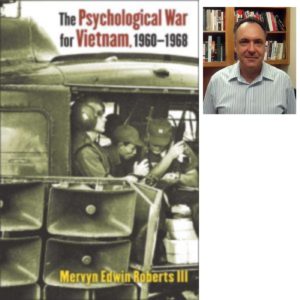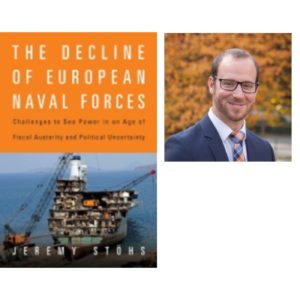Podcast: Play in new window | Download
Subscribe: RSS

Dr. Merv Roberts has worked on psychological operations in Afghanistan. His work there inspired him to write a history of psychological operations in the Vietnam War and I interviewed him about this book “The Psychological War for Vietnam, 1960-1968.”
2:07- Dr. Roberts decided on studying Information Operations in Vietnam after he returned from a deployment to Afghanistan. No one had done an over arching study of Psychological Operations in the Vietnam War.
3:38 – The book is on joint operations and looked at both North and South Vietnam. He used the Foreign Broadcast Information Service collections.
5:25 – The North Vietnam program was modeled on the Soviet program. It’s about agitation and propaganda. The American system evolved over the course of the war. It came from the American advertising culture that used subjective truth.
8:38 – North Vietnamese leadership was divided over whether to focus on the North or to spread the revolution to the South. The US started trying to divide these factions in 1967 but then [we] the US ends psy war against the North after the Tet Offensive.
12:14 – The North became ineffective at waging psychological warfare against the South but was very effective in it’s worldwide campaign to get countries against the war.
17:11 – Dr. Roberts compares psychological operations and civil affairs activities. In Vietnam civil affairs fell under psychological operations.
21:31 – Edward Landsdale was good at psychological operations in the region.
23:55 – The North Vietnamese used some anti-war activists to spread their message.
27:03 – FBIS is a largely untapped resource for information on the Cold War and events during this period. He also wants to use Geographic Information Systems in conjunction with FBIS information. He also used the Hamlet level evaluations which he admits many people consider a subjective assessment of villages. There were also terrorist activity reports with geographic data attached. The Friendly Forces file provides data on where friendly forces were during the war.
34:04 – Most Psy Ops guys aren’t trained very well during Vietnam.
35:35 – Going through all the captured documents was fascinating for Dr. Roberts. Much of them haven’t been looked at more than once since capture.
37:03 – There are indications the program was effective in 1968.
39:08 – The Vietnamese go to Texas Tech when they want to research the Vietnam War because of how many documents Tech has from the war. FBIS is harder to get a hold of.
42:25 – There are very few books looking at psychological operations across various wars so this book will help fill that gap.
47:34 – There were problems between various US government organizations on how to do psy op in Vietnam. The State Department had the primacy on what messaging would be done in Vietnam.
For more “Military History Inside Out” please follow me on Facebook at warscholar, on twitter at Warscholar, on youtube at warscholar1945 and on Instagram @crisalvarezswarscholar
Guests: Merv Roberts
Host: Cris Alvarez
Tags: vietnam war, psychological operations, north vietnam, tet offensive, hamlet program


